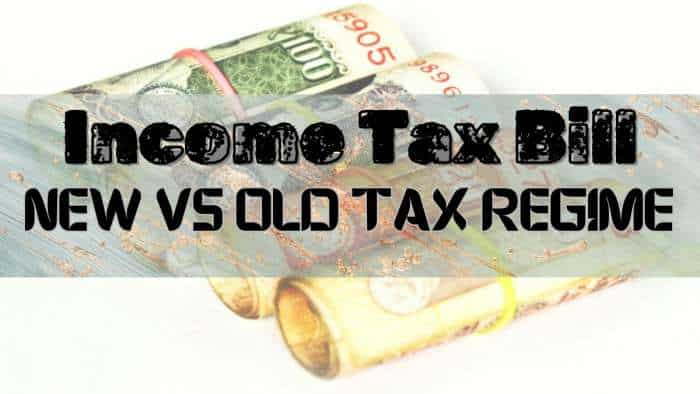RBI Monetary Policy: Full text of RBI Governor Shaktikanta Das' speech
The global economy is now witnessing a renewed phase of turbulence with fresh headwinds from the banking sector turmoil in some advanced economies, said Das.

RBI Monetary Policy, RBI Governor speech today: Here is the full text of RBI Governor Shaktikanta Das speech today:-
The year 2023 began on a promising note as supply conditions were improving, economic activity remained resilient, financial markets exuded greater optimism and central banks were steering their economies towards a soft landing. In just a few weeks during March, this narrative has undergone a dramatic shift. The global economy is now witnessing a renewed phase of turbulence with fresh headwinds from the banking sector turmoil in some advanced economies. Bank failures and contagion risk have brought financial stability issues to the forefront. Given the stubbornness in inflation, central banks continue to tighten monetary policy, although at a reduced pace. Inflation globally has moderated in the recent months, but its descent to the target is proving to be long and arduous.
2. The former chairman of the US Federal Reserve Alan Greenspan had once said: “Uncertainty is the defining characteristic of the monetary policy landscape."This he was talking in an era of great moderation and in more normal times compared to today’s situation. What we are witnessing today is unprecedented uncertainty in eopolitics, economic activity, price pressures and financial markets never seen before. One can imagine the magnitude of challenges central banks and other policy makers face in today’s world.
Decisions and Deliberations of the Monetary Policy Committee (MPC)
3. The Monetary Policy Committee (MPC) met on 3rd, 5th and 6th April 2023 and assessed the macroeconomic situation and its outlook. It decided unanimously to keep
the policy repo rate unchanged at 6.50 per cent in this meeting with readiness to act, should the situation so warrant. Consequently, the standing deposit facility (SDF) rate will remain unchanged at 6.25 per cent and the marginal standing facility (MSF) rate and the Bank Rate at 6.75 per cent. The MPC also decided by a majority of 5 out of 6 members to remain focused on withdrawal of accommodation to ensure that inflation progressively aligns with the target, while supporting growth. Let me emphasise that the decision to pause on the repo rate is for this meeting only.
4. I would now like to explain the MPC’s rationale for these decisions on the policy rate and the stance. While the recent high frequency indicators suggest some improvement in global economic activity, the outlook is now tempered by additional downside risks from financial stability concerns. Headline inflation is moderating but remains well above the targets of central banks. These developments have led to heightened volatility in global financial markets as reflected in sizeable two-way
movements in bond yields, fall in equity markets and the US dollar shedding its gains from its peak of September 2022.
5. Amidst this volatility, the banking and non-banking financial service sectors in India remain healthy and financial markets have evolved in an orderly manner. Economic activity remains resilient and real GDP growth is expected to have been 7.0 per cent in 2022-23. Consumer price inflation, however, has increased since December 2022, driven by price pressures in cereals, milk and fruits. Core inflation remains elevated.
6. Looking ahead, headline inflation is projected to moderate in 2023-24. The monetary policy actions taken since May 2022 are still working through the system.
Accordingly, the MPC decided to keep the policy rate unchanged to assess the progress made so far, while closely monitoring the evolving inflation outlook. The MPC will not hesitate to take further action as may be required in its future meetings.
7. To recapitulate the actions taken so far, we have increased the policy repo rate cumulatively by 250 bps in the last 11 months starting May 2022. This was preceded by the introduction of the Standing Deposit Facility (SDF) at a rate 40 bps higher than the fixed rate reverse repo. Thus, the effective rate hike since April last year has been 290 bps. These increases have been fully transmitted to the overnight weighted average call money rate (WACR), the operating target of monetary policy, which has gone up from daily average of 3.32 per cent in March 2022 to 6.52 per cent in March 2023. It is now necessary to evaluate the cumulative impact of these rate hikes. Under these circumstances, we have to be extremely prudent in our actions. We have always been very watchful and have adopted a calibrated and balanced approach and will continue to do so.
8. When we started the rate cut cycle in February 2019 to provide support to growth, the CPI inflation was around 2 per cent2 and the policy repo rate was 6.50 per cent. Now, the policy rate is 6.50 per cent but inflation is 6.4 per cent (February 2023). Overall, inflation is above the target and given its current level, the present policy rate can still be regarded as accommodative. Hence, the MPC decided to remain focused on withdrawal of accommodation.
Assessment of Growth and Inflation
9. As stated earlier, India’s real gross domestic product (GDP) is expected to have recorded a growth of 7.0 per cent in 2022-23. Hence, economic activity remains resilient.
10. On the supply side, rabi foodgrains production is estimated to increase by 6.2 per cent in 2022-23. PMI manufacturing remained robust at 56.4 in March, recording
expansion for the 21st consecutive month due to favourable domestic demand. Services sector activity exhibited buoyancy. PMI services remained in expansion zone at 57.8 in March, driven by favourable demand conditions and new business gains.
11. Aggregate demand conditions were resilient in Q4 of 2022-23, even as private consumption showed some signs of slowdown. Urban demand indicators like passenger
vehicle sales and credit cards spending registered robust growth in February, while consumer durables contracted in January. Rural demand indicators such as consumer
non-durables, tractor and two wheeler sales registered healthy growth. Investment activity exhibited buoyancy on the back of government’s thrust on infrastructure
spending, high capacity utilisation and revival in corporate investment in certain key sectors.3 Non-food bank credit rose by 15.4 per cent (y-o-y) as on March 24, 2023. The total flow of resources to the commercial sector has increased by ₹26.0 lakh crore during 2022-23 as against ₹19.0 lakh crore a year ago. Merchandise exports and non-oil nongold imports contracted in February. Services exports continued to register robust growth. Supply chains are returning to normalcy globally as well as domestically.
12. Looking ahead, the higher rabi production has brightened the prospects for agriculture sector and rural demand. The steady growth in contact-intensive services
should be positive for urban demand. The government’s focus on capital expenditure, capacity utilisation above long-period average and moderating commodity prices should bolster manufacturing and investment activity. The drag from net external demand may continue due to increased global headwinds. The protracted geopolitical tensions and global financial market volatility pose downside risks to the outlook. Taking all these factors into consideration, real GDP growth for 2023-24 is projected at 6.5 per cent, with Q1 at 7.8 per cent; Q2 at 6.2 per cent; Q3 at 6.1 per cent; and Q4 at 5.9 per cent. The risks are evenly balanced.
Inflation
13. The softening in inflation during November-December 2022 turned out to be transitory with CPI headline inflation breaching the upper tolerance threshold during
January-February 2023.4 A sharp turnaround in food inflation drove the pick-up in headline inflation as core inflation remained elevated across a range of goods and
services.
14. Looking ahead, the expectation of a record rabi harvest bodes well for easing of food price pressures. There is already evidence of a correction in wheat prices in March on supply side interventions by the Government. The impact of the recent unseasonal rains in some parts of the country, however, needs to be watched. Global commodity prices have moderated significantly from their heightened levels a year ago. As our surveys point out, cost conditions have somewhat eased. Inflation expectations of households have also edged down. On the upside, adverse climatic conditions are a risk to the future inflation trajectory. Milk prices are also likely to remain firm going into the summer season due to tight demand-supply balance and fodder cost pressures. The rising uncertainty in international financial markets and imported inflation pressures need to be monitored closely. Taking into account these factors and assuming an annual average crude oil price (Indian basket) of US$ 85 per barrel and a normal monsoon, CPI inflation is projected to moderate to 5.2 per cent for 2023-24; with Q1 at 5.1 per cent; Q2 at 5.4 per cent; Q3 at 5.4 per cent; and Q4 at 5.2 per cent. The risks are evenly balanced.
15. Let me now summarise what I have said so far. We are living in very volatile times. The sudden announcement of an output cut by OPEC+ a few days ago and the resultant jump in crude oil prices is yet another evidence of this volatility. The overall outlook thusremains dynamic and fast evolving. Our monetary policy in the recent period has aimed for a non-disruptive normalisation from the pandemic era stimulus measures. Even as monetary policy moved decisively to withdrawal of accommodation, financial conditions evolved in line with the productive requirements of the economy. Growth has since then become broad-based. Inflation has softened from its elevated levels a year ago; however, it still remains above the upper tolerance band. Projections for 2023-24 point to a softening in inflation, though the disinflation is likely to be gradual and protracted, given the rigidity in core or underlying inflation pressures. At this stage, we remain watchful of
the evolving outlook and the impact of our actions during the past one year on the broader real economy. While we have kept the policy rate unchanged, it is important to bear in mind that that this decision was taken on the basis of our assessment of the macroeconomic and financial conditions with reference to the information available up to today. Our job is not yet finished and the war against inflation has to continue until we see a durable decline in inflation closer to the target. We stand ready to act appropriately and in time. We are confident that we are on the right track to bring down inflation to the target rate over the medium term. As we proceed towards this objective, I recall the wise counsel of Kautilya more than two thousand years ago: “Be not slack before the whole
job is finished.”
Financial Stability
16. With the fight against inflation far from over, the global economy is now confronted with serious financial stability challenges from the recent banking sector developments in some advanced economies. This calls for a reappraisal of the responsibilities of the regulators and the regulated entities world over and their collective role in safeguarding the stability of the financial system. While regulators need to identify potential vulnerabilities and take proactive regulatory and supervisory measures, it is incumbent upon the regulated institutions to exercise due diligence in their risk management and
corporate governance practices. They need to pay close attention to asset-liability mismatches and profile of their deposit base, while building up adequate capital buffers and conducting periodic stress tests.
17. It is in this context that we, in the Reserve Bank, have focused on macro-and micro-prudential measures in recent years to prevent build-up of financial vulnerabilities. We have adopted a prudent approach towards regulation and supervision and have taken several steps in these areas in recent years.6 Some of these regulatory measures are listed in the footnote of this statement.
18. Our supervisory systems have also been strengthened significantly in recent years. We have adopted a unified and harmonised supervisory approach for commercial
banks, NBFCs and urban cooperative banks (UCBs).7 The focus is now more on identifying the root cause of vulnerabilities, rather than dealing with the symptoms alone.
As a result, the Indian banking system remains sound and healthy, with strong capital and liquidity positions, improving asset quality, better provisioning coverage along with improved profitability.
19. Nevertheless, we are keeping a close watch on the banking sector turmoil in some developed countries. In this context, let me once again recall Kautilya’s wisdom, which remains relevant even for today’s world: “In the interests of the prosperity of the country, …..[we] should be diligent in foreseeing the possibility of calamities, try to avert them before they arise, overcome those which happen, remove all obstructions to economic activity …..”
Liquidity and Financial Market Conditions
20. The Reserve Bank will continue to adopt a nuanced and agile approach to liquidity management. Amidst large moderation in surplus liquidity, the Reserve Bank conducted 14-day variable rate repo (VRR) auctions (main operation) on February 10 and March 10 and a fine-tuning 5-day VRR auction on March 24, 2023. In the period ahead, the Reserve Bank will remain flexible in meeting the productive requirements of the economy through two-way operations, as may be necessary. We will also ensure the completion of the Government borrowing programme in a non-disruptive manner while maintaining
orderly market conditions during 2023-24.
21. The Indian Rupee has moved in an orderly manner in the calendar year 2022 and continues to be so in 2023 also. This is reflective of the strength of domestic macroeconomic fundamentals and the resilience of the Indian economy to global spillovers. We remain watchful and focused on maintaining stability of the Indian rupee.
External Sector
22. The current account deficit (CAD) for the first three quarters of 2022-23 stood at 2.7 per cent of GDP. In Q3, CAD narrowed significantly to 2.2 per cent from 3.7 per cent in Q2 on account of lower merchandise trade deficit and robust growth in services exports. Strong software services export growth was witnessed across key verticals such as IT services, Business Process Management (BPM), and engineering research and design (ER&D), supported by a rise in global capability centres (GCCs).
23. The merchandise trade deficit further narrowed during January and February 2023 from its level in Q3:2022-23 on the back of a sustained decline in imports. Moreover, India’s services exports continued to grow at a healthy pace in the first two months of 2023. Better growth prospects of the gulf cooperation council (GCC) countries are expected to keep remittances robust. In fact, inward gross remittances touched an alltime high of US$ 107.5 billion during calendar year 2022. The CAD is expected to remain moderate in Q4:2022-23 and in the year 2023-24 at a level that is both viable and
eminently manageable.
24. Overall, our external sector indicators have improved significantly. Foreign exchange reserves have rebounded from US$ 524.5 billion on October 21, 2022 and now
stand in excess of US$ 600 billion taking into account our forward assets.
Additional Measures
25. I shall now announce certain additional measures. Developing an Onshore Non-deliverable Derivative Market
26. Banks in India with IFSC Banking Units (IBUs) were earlier permitted to transact in Indian Rupee (INR) non-deliverable foreign exchange derivative contracts (NDDCs) with non-residents and with other eligible banks having IBUs. It is now proposed to permit banks with IBUs to offer NDDCs involving INR to resident users in the onshore market. This measure will further deepen the forex market in India and provide enhanced flexibility to residents in meeting their hedging requirements.
Enhancing Efficiency of Regulatory Processes
27. At present, the processes for entities to make applications seeking license / authorisation or regulatory approvals from the Reserve Bank under various statutes /
regulations take place in both online and off-line modes. To simplify and streamline such processes and in line with the Union Budget 2023-24 announcement, it has been decided to have a secured web based centralised portal named as ‘PRAVAAH’ (Platform for Regulatory Application, Validation And AutHorisation) for such processes. The portal will show time limits for deciding on the applications/approvals sought. This measure will bring greater efficiencies into regulatory processes and facilitate ease of doing business for the regulated entities of the Reserve Bank.
Development of Centralised Web Portal for the Public to Search Unclaimed Deposits
28. At present, the depositors or beneficiaries of unclaimed bank deposits of 10 years or more have to go through the websites of multiple banks to locate such deposits. Now, in order to improve and widen the access of depositors / beneficiaries to information on such unclaimed deposits, it has been decided to develop a web portal to enable search across multiple banks for possible unclaimed deposits. This will help depositors/beneficiaries in getting back unclaimed deposits.
Grievance Redress Mechanism relating to Credit Information Reporting by Credit Institutions and Credit information provided by Credit Information Companies
29. Recently, the Credit Information Companies (CICs) were brought under the purview of the Reserve Bank Integrated Ombudsman Scheme (RB-IOS). It is now proposed to put in place the following measures: (i) a compensation mechanism for delayed updation/rectification of credit information reports; (ii) a provision for SMS/email
alerts to customers whenever their credit information reports are accessed; (iii) a timeframe for inclusion of data received by CICs from Credit Institutions; and (iv)
disclosures on customer complaints received by CICs. These measures will further enhance consumer protection. Operation of Pre-Sanctioned Credit Lines at Banks through the UPI
30. The Unified Payments Interface (UPI) has transformed retail payments in India. UPI’s robustness has been leveraged to develop new products and features from time to time. Recently, RuPay credit cards were permitted to be linked to UPI. This was in addition to the existing facility of linkage of UPI with deposit accounts. It is now proposed to expand the scope of UPI by permitting operation of pre-sanctioned credit lines at banks through the UPI. This initiative will further encourage innovation.
Conclusion
31. Since early 2020, the world is going through a period of extreme uncertainty. In this daunting environment, India’s financial sector remains resilient and stable. Overall, the broadening of economic activity; the expected moderation in inflation; the fiscal consolidation with focus on capital spending; the significant narrowing of the current account deficit to more sustainable levels; and the comfortable level of foreign exchange reserves are welcome developments which will further bolster India’s macroeconomic stability. This allows monetary policy to remain unwaveringly focused on inflation. With unyielding core inflation, we remain firm and resolute in our pursuit of price stability which is the best guarantee for sustainable growth. The impact of our actions over the past 12 months is still playing out and would increasingly weigh on the future inflation trajectory.
As I noted in my policy statement in April last year, our goals of price stability, sustained growth and financial stability are mutually reinforcing and we continue to be guided by this approach. We remain vigilant and ready to face the challenges with a firm commitment to price and financial stability. We are inspired by what Mahatma Gandhi had said: “…inexhaustible perseverance and patience… knows no defeat.”
Thank you. Namaskar.
Also Read: Repo rate hike paused: Here’s why RBI MPC took a pause this time
Get Latest Business News, Stock Market Updates and Videos; Check your tax outgo through Income Tax Calculator and save money through our Personal Finance coverage. Check Business Breaking News Live on Zee Business Twitter and Facebook. Subscribe on YouTube.
RECOMMENDED STORIES

Income Tax Calculations: What will be your tax liability if your salary is Rs 8 lakh, Rs 14 lakh, Rs 20 lakh, and Rs 26 lakh?

Senior Citizen FD Rates: Which bank offers you highest return on Rs 1 lakh deposit in 1-, 3-, and 5-year schemes? Check calculations

8th Pay Commission: Can basic pension cross Rs 3 lakh mark in new pay commission? See calculations to know its possibility?

Retirement Planning: How one-time investment of Rs 10,00,000 can create Rs 3,00,00,000 retirement corpus
11:34 AM IST








 Rate hikes since May 2022 helped reduce inflation by 1.60%: RBI paper
Rate hikes since May 2022 helped reduce inflation by 1.60%: RBI paper India's forex kitty jumps $412.588 billion to hit record high of $704.885 billion
India's forex kitty jumps $412.588 billion to hit record high of $704.885 billion India's real estate rises to transparent tier in global rankings, set to attract major investments
India's real estate rises to transparent tier in global rankings, set to attract major investments Aurionpro Payments gets RBI nod to operate as online payment aggregator
Aurionpro Payments gets RBI nod to operate as online payment aggregator RBI enhances contingent reserve buffer to 6.5% amid positive economic outlook
RBI enhances contingent reserve buffer to 6.5% amid positive economic outlook